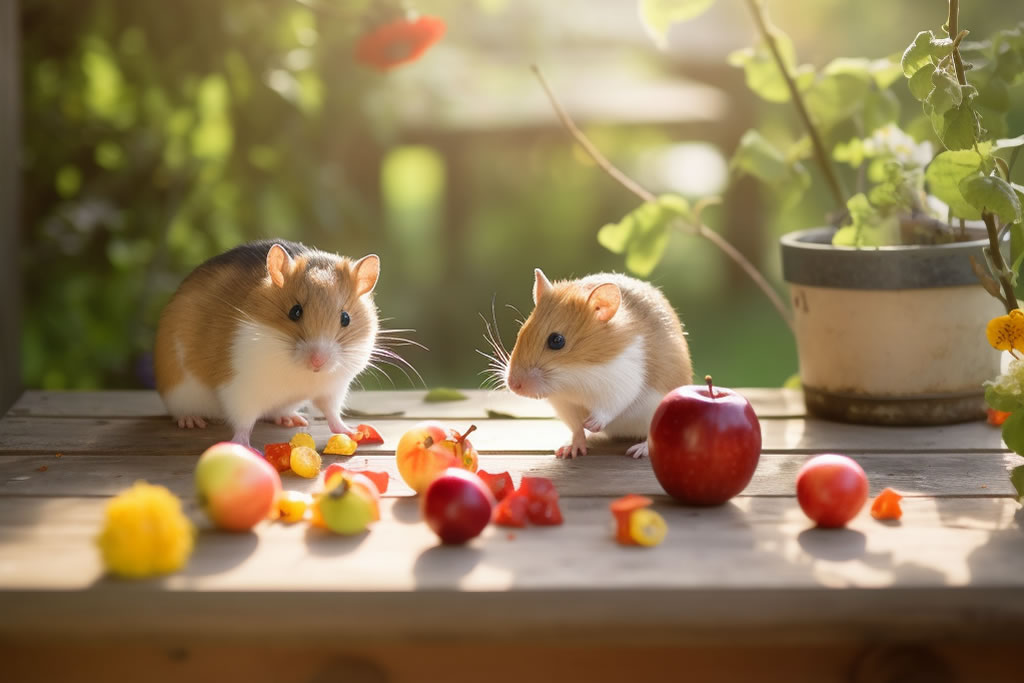So, you’re thinking about getting a hamster? These tiny, whiskered creatures might seem like the perfect low-maintenance pet, but there’s a lot more to hamster care than meets the eye. Whether you’re a first-time owner or a seasoned rodent enthusiast, here’s a detailed, no-nonsense guide to help you prepare for life with a hamster.
1. Choosing the Right Hamster: It’s Not One-Size-Fits-All
Not all hamsters are the same! Their size, temperament, and care needs vary widely by breed. Let’s break it down:
| Breed | Size | Lifespan | Activity Time | Social Needs |
|---|---|---|---|---|
| Syrian | 6–7 inches | 2–3 years | Nocturnal | Strictly solitary |
| Dwarf (Roborovski) | 2 inches | 3–3.5 years | Crepuscular* | Can live in pairs** |
| Chinese | 4 inches | 2–3 years | Nocturnal | Solitary |
*Crepuscular = Most active at dawn/dusk
**Pairs require careful introduction and monitoring to avoid fights.
Syrians are popular for their friendly nature but need more space, while dwarf breeds are quicker and harder to handle. Chinese hamsters have long tails and are escape artists—so choose based on your lifestyle!
2. Housing: Bigger Is Always Better
Forget the tiny cages sold at pet stores. Hamsters are natural explorers and need room to burrow, climb, and play. Here’s the minimum space required:
| Breed | Cage Size (L x W x H) | Wheel Size | Bedding Depth |
|---|---|---|---|
| Syrian | 40” x 20” x 20” | 10–12 inches | 6+ inches |
| Dwarf | 30” x 15” x 15” | 6–8 inches | 4+ inches |
Pro Tips:
- Avoid wire floors—they cause foot injuries. Opt for glass tanks or bin cages.
- Layer bedding: Use unscented paper or aspen shavings (never cedar or pine—toxic!).
- Add tunnels: Cardboard tubes or coconut hides mimic their natural burrowing instincts.
3. Diet: More Than Just Seeds
Hamsters are omnivores, and a balanced diet prevents obesity and malnutrition. Here’s a quick guide:
| Food Type | Examples | Frequency |
|---|---|---|
| Commercial pellets | High-quality lab blocks (e.g., Kaytee) | Daily staple |
| Fresh veggies | Broccoli, carrots, spinach | 2–3 times/week |
| Protein | Mealworms, boiled egg, plain chicken | 1–2 times/week |
| Treats | Sunflower seeds, apple slices | Sparingly (high in fat) |
Avoid: Citrus fruits, onions, chocolate, and sugary snacks. Always provide fresh water in a drip bottle.
4. Health Red Flags: Don’t Ignore These!
Hamsters hide illness well—a survival instinct. Watch for:
- Wet tail (diarrhea + lethargy): A deadly bacterial infection requiring immediate vet care.
- Overgrown teeth: Provide chew toys (wooden blocks, mineral stones).
- Lumps or sores: Could indicate abscesses or tumors.
Vet Visits: Find an exotic pet vet. Annual checkups are a must, especially for seniors (hamsters over 18 months).
5. Enrichment: Happy Hamster = Busy Hamster
Boredom leads to stress and cage-biting. Keep them entertained with:
- Toys: Rotate weekly to prevent boredom. Try DIY options like toilet paper rolls.
- Sand baths: Dwarf breeds love rolling in chinchilla sand (not dust!) for coat health.
- Foraging: Hide treats in bedding or puzzle feeders.
Handling Tips:
- Start slow—let them sniff your hand.
- Never wake a sleeping hamster (they’re grumpy!).
- Supervise kids: Hamsters are fragile and may nip if scared.
6. The Reality Check: Time and Costs
Hamsters are cheap to buy but require ongoing investments:
| Expense | Initial Cost | Monthly Cost |
|---|---|---|
| Cage setup | 80–80–150 | N/A |
| Food & bedding | $20 | 15–15–25 |
| Vet emergencies | 100–100–300 | As needed |
Plus, they’re nocturnal—expect midnight wheel noises! If you’re a light sleeper, keep the cage out of your bedroom.
Final Thoughts
Hamsters are delightful but demanding pets. They thrive on routine, a stimulating environment, and gentle interaction. Before adopting, ask yourself: Can I commit to cleaning their cage weekly? Can I handle vet bills? If yes, you’re in for a rewarding experience filled with tiny footprints and endless curiosity.
Remember: A happy hamster isn’t just a pet—it’s a lifelong lesson in responsibility and compassion. 🐹



